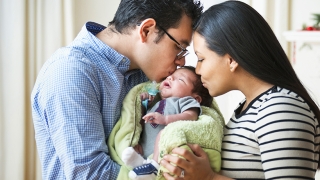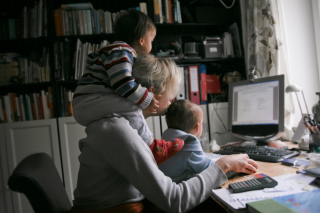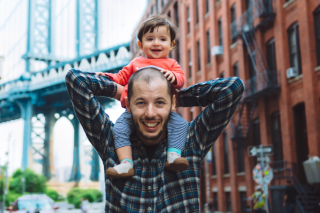Time to Bond: Paid Family Leave for New Parents

PFL for Births in 2017
Because the entitlement period stretches over a full year from the date of birth, even employees who had a baby in 2017 can qualify for PFL. The length of leave available depends on the birth date:
- If the birth occurred more than eight weeks into 2017, the employee may qualify for the maximum benefit duration.
- For example, parents who had a baby on March 9, 2017, are eligible for eight weeks of PFL to be taken before March 9, 2018.
- If the birth was less than eight weeks into 2017, the employee qualifies for only a portion of the maximum benefit.
- For example, parents who had a baby on Jan. 28, 2017, are eligible for four weeks of PFL to before Jan. 28, 2018.
Time off to bond with a new child is likely to be a widely used benefit under New York's Paid Family Leave Program. Avoid surprises in January by learning what to expect.
Is bonding time off just for births? No. An employee can take Paid Family Leave to bond with a child for a birth, adoption or foster placement.
What's the timeline for taking PFL? In 2018, employees can take a maximum of eight weeks of PFL. Here's how it works for birth and bonding:
- After a birth, an employee's right to take PFL to bond with a child expires at the end of the consecutive 52-week period beginning on the date of the birth.
- For an adoption or foster placement, the right to take PFL expires at the end of the consecutive 52-week period beginning on the date of the placement or the first day of leave taken.
- Employees may also take PFL before an adoption or foster placement of a child age 17 or younger, if the process requires an absence from work. Examples include: Time off for counseling sessions, appearing in court, consulting with attorneys or doctors representing the birth parents, physical examinations and traveling to complete an adoption.
- If two parents want to take PFL, the 52-week time frame applies to both.
How Does PFL Work With Disability Benefits Law?
Qualifying events surrounding motherhood can overlap both DBL and Paid Family Leave. When a birth mother elects to take disability benefits during the immediate postpartum period, she may take DBL followed by PFL, but not both together. An employee can’t exceed 26 weeks of DBL and PFL combined within the consecutive 52-week period beginning on the date of the birth (or within any consecutive 52-week period).
Employee Scenario: Sasha's Maternity Leave
During the last three weeks of Sasha's pregnancy, her doctor orders bed rest to prevent premature labor. She has a normal delivery. Sasha files a claim for DBL benefits for the three weeks of bed rest and for six weeks of recovery after birth. She also takes eight weeks of PFL after her recovery to bond with her newborn.

Employee Scenario: Chris and Ramon Welcome 2 Foster Children
When Chris and Ramon's oldest child heads off to college, they decide to become foster parents. Before the placement, Chris and Ramon take intermittent PFL to make legal arrangements and attend counseling sessions. When the children join the family, both parents take four weeks of PFL for bonding. They also take intermittent leave to cover days school is closed, medical appointments and follow-up counseling.

You'll find more examples in our article comparing PFL, FMLA and DBL.
For more details about New York Paid Family Leave, visit: ny.gov/programs/new-york-state-paid-family-leave.
Follow The Standard on Facebook, LinkedIn and Twitter with the hashtag #PaidFamilyLeave, and subscribe to this blog's RSS feed to receive updated content as new information becomes available.
More About Demographic Groups








